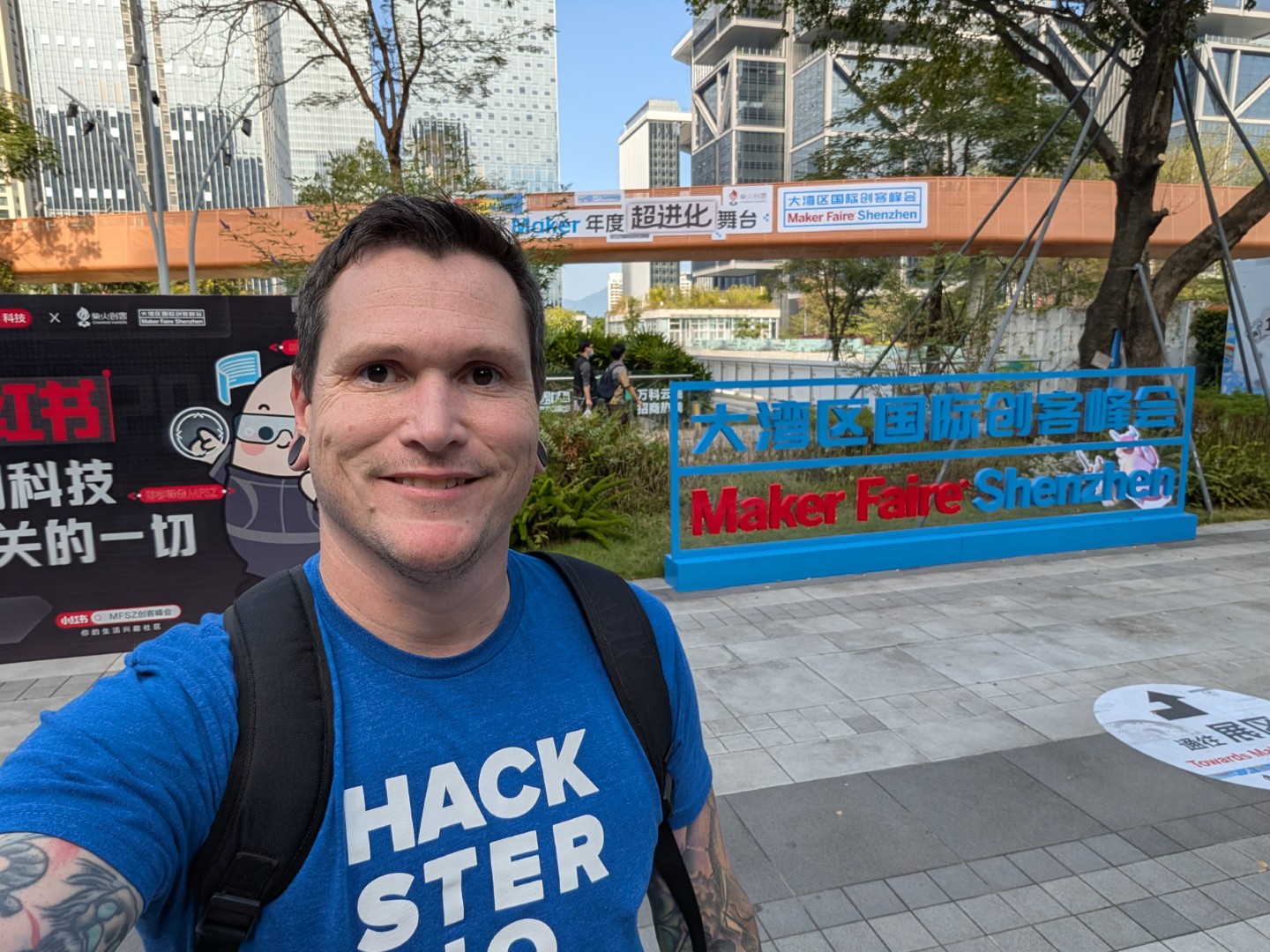I just returned to the US from a trip to China, where I got to attend Maker Faire Shenzhen. It was a great experience and I was impressed with so much that I saw there. But more than that, I realized that there are a few differences between Chinese and American maker culture that stand out. I’m going to highlight those here and talk about what I think Americans can learn from Chinese makers.
Products vs. Projects
One of the first things that stood out to me was how many of the booths were devoted to designs that were or would become products, rather than simply projects completed purely for hobby purposes.
I want to be very clear that I don’t think everything needs to be a product and that there isn’t anything wrong with building something for oneself, just for fun. In fact, that would probably describe the majority of the projects I’ve personally completed.

But I found the Chinese product-driven perspective intriguing. As makers, we put a massive amount of time, effort, and money into our projects. Surely, many people would like to see some return on those efforts. So, why aren’t we trying to bring our designs to market as products?
That led me to my next realization…
Investment and Resources
The truth is that it is incredibly difficult to bring a product to market. Designing and building a prototype might actually be the easiest part of the entire process. From there, one needs to enter into the very complex world of manufacturing, logistics, regulatory compliance, warehousing and shipping, billing, customer service, and after-sales support.
Those are so overwhelming that most American makers don’t even bother. Unless a maker can partner with some kind of hardware incubator, it is unlikely that they’ll ever have the resources or expertise at their disposal for a launch.
The situation in China seems to be very different. While free money isn’t available anywhere in the world, development resources and startup investment funds appear to be much more accessible in China—from hardware companies, investment groups, and even the government.

Makerspaces highlight that. All of the makerspaces I’ve visited in the United States cater to hobbyists working on personal projects. But many of China’s makerspaces, such as Chaihuo Maker Space and TroubleMaker (both located in Shenzhen), provide environments where engineers can develop real products and gain access to contacts that can furnish additional resources.
That is something I would love to see in the United States, but it would require involvement and investment from our own technology corporations and government programs.
That even extends to the events themselves. Compare the cost of attending Open Sauce (hundreds of dollars) to that of attending Maker Faire Shenzhen (free), for example.
Diversity and Inclusion
Anyone who has visited a makerspace or maker event in the United States can tell you that they attract a very specific demographic: white men (particularly men in the mid-20s to 50s). People like myself.
That is not to say that we don’t see other demographics. People of other genders and ethnicities do participate, but not nearly to the extent that I would like.

Maker Faire Shenzhen, on the other hand, had a great deal of young people present and what appeared to be a 50/50 split of men and women. That was very refreshing to see. Of course, Shenzhen is a very ethnically homogeneous city and so there wasn’t much diversity in that respect, but I don’t think that was due to a lack of acceptance or inclusion.
In the Western world, influential voices have long decried the lack of women in STEM. But though we’ve seen some progress, the needle hasn’t moved nearly as much as many of us have hoped.

What can we do to fix that? I’m not sure. Notable figures in the maker community, such as Becky Stern, Simone Giertz, and Estefannie, are making a difference in the West. But the men in the maker community—including myself—need to be more welcoming and accepting of the women and girls who show an interest in this space.
The Civic Mindset
The takeaway here is that those of us in the United States and in other Western countries should avoid making the mistake of thinking that we’re doing this whole maker thing “right.”
I love the maker community. I’ve devoted both my professional career and a great deal of my personal life to it. But there is so much room for improvement and Maker Faire Shenzhen made that obvious to me.
We need American technology companies, universities, and government programs to invest in our makers. We need to provide those makers with the resources they need to bring their designs to market, if they have the desire to do so. And we need to provide an encouraging and supportive environment for women and girls.

I think, when we really dig down into it, our current faults mirror the general lack of civic pride in modern America. Not nationalism, but a belief that we can and should invest in our country, cities, and local communities.
When we invest in the maker community, everyone benefits. If we can adjust our collective mindset and learn some lessons from Chinese makers, we should see a resurgence in participation and innovation.
